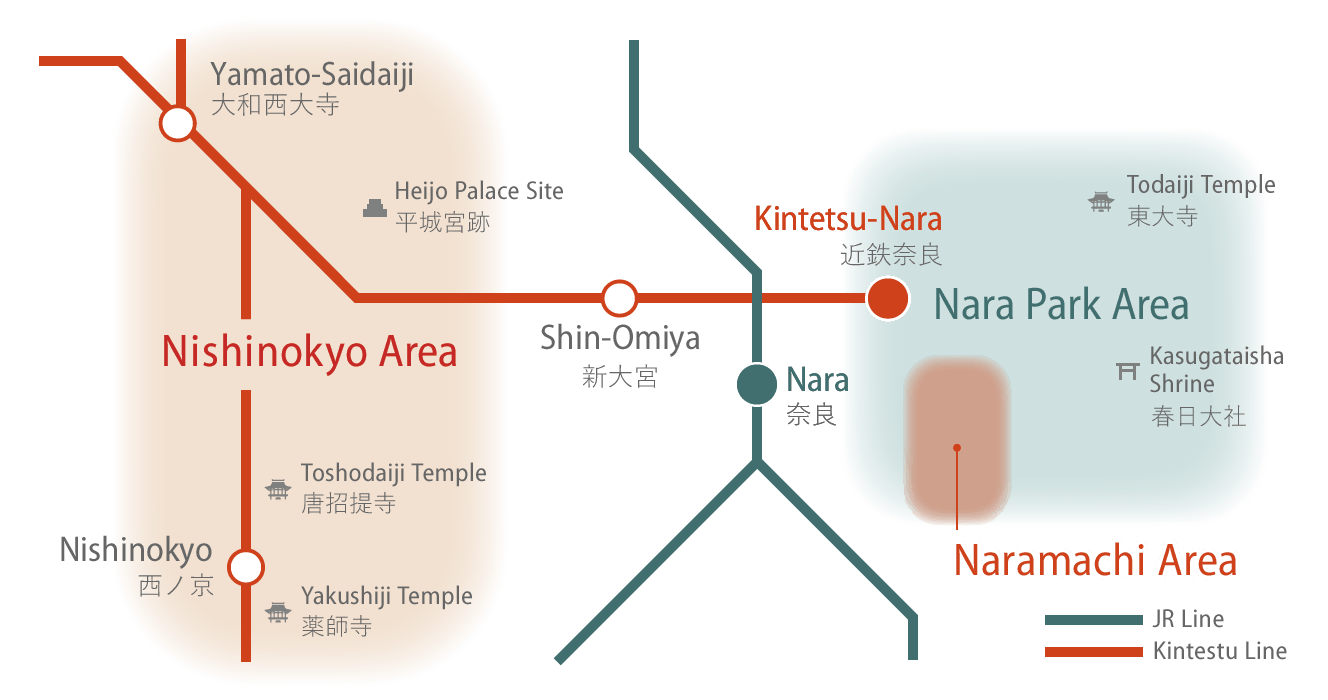Just to the east of Nara Park, the narrow, winding streets of traditional merchant houses now host sweet shops, modern art galleries, hip cafes and boutique ryokan. With shops like Yu Nakagawa, Naramachi is a great place to find contemporary Nara crafts and stylish souvenirs. The whole area is compact and easy to cover on foot. Alongside Nara Park and Nishinokyo, Naramachi is one of Nara City's main draws.
In the heart of Naramachi is Gangoji Temple, Japan’s oldest Buddhist temple, first built in Asuka but relocated here around 718 AD. Fires during the 15th and 19th centuries destroyed many of the original structures and the need for more residential space gradually diminished the temple’s influence and size.
On Shimomikado Street in the heart of Naramachi, Nakanishi Yosaburo has been a fixture for over 150 years, making wagashi for tea ceremonies. One popular sweet mimics the strings of Naramachi amulets, called “migawarisaru," or scapegoat monkeys, which hang from the eaves of houses to protect the residents.
Experience Naramachi
Top Recommendations
Local Insights
Naramachi Townhouses
The Naramachi district was originally the grounds of Gangoji Temple, till demand for housing took over. Dating to the Edo era, the machiya or townhouses in the area are very different to other towns, such as Imaicho. Taxes were levied according to the frontage of the house, so they were built narrow at the front.
Migawarisaru
Since the Edo era, strings of red and white silk shapes have been hung from the eaves of houses in the Naramachi district. These migawarisaru, or scapegoat monkeys, protect the residents. They make for unique souvenirs. You can hang one for each family member, and write wishes on their backs.
Sarusawa Pond
At the top of Sanjo-dori Street, Sarusawa Pond is a man-made pond, dating back to 749 as part of Kohfukuji Temple. There is a legend that a court lady in the Nara era drowned herself in the pond after falling out of favor with the Emperor.
12 related lists & stories
Good to Know
Best Time to Go
During the hot summer season, the cool interiors of the shops and old townhouses in Naramachi offer visitors a welcome respite. Likewise, on cold winter days and during wet weather, the shops throughout the area offer shelter and the opportunity to pick up some unique mementos of your trip. Exploring the narrow streets of Naramachi is an enjoyable experience in any season.
Getting Around
Concentrated in a small area approximately one kilometer in diameter, Naramachi is easily covered on foot. The nearest train station is the Kintetsu-Nara Station, and buses to other areas of the city can be caught from any of the main roads that run along the perimeter of the neighborhood.
Travel Tips
Naramachi is a complex grid of narrow streets. Much of the fun of exploring the area lies in wandering about and taking turns at will. That being said, returning to a shop that caught your eye a few hours earlier can sometimes be a feat. It's worth picking up a map of the area from nearby Nara Visitor Center & Inn to make a note of any interesting finds you make.
Getting to Naramachi
Naramachi is a short walk south of Kintetsu-Nara Station. It can also be accessed on foot from JR Nara Station, taking roughly 20 minutes. If the walk doesn't appeal, Nara City Loop Line, Central Loop Line and Gurutto buses as well as other buses bound for Nara Hotel/Gangoji Temple make stops in and around the Naramachi area.

